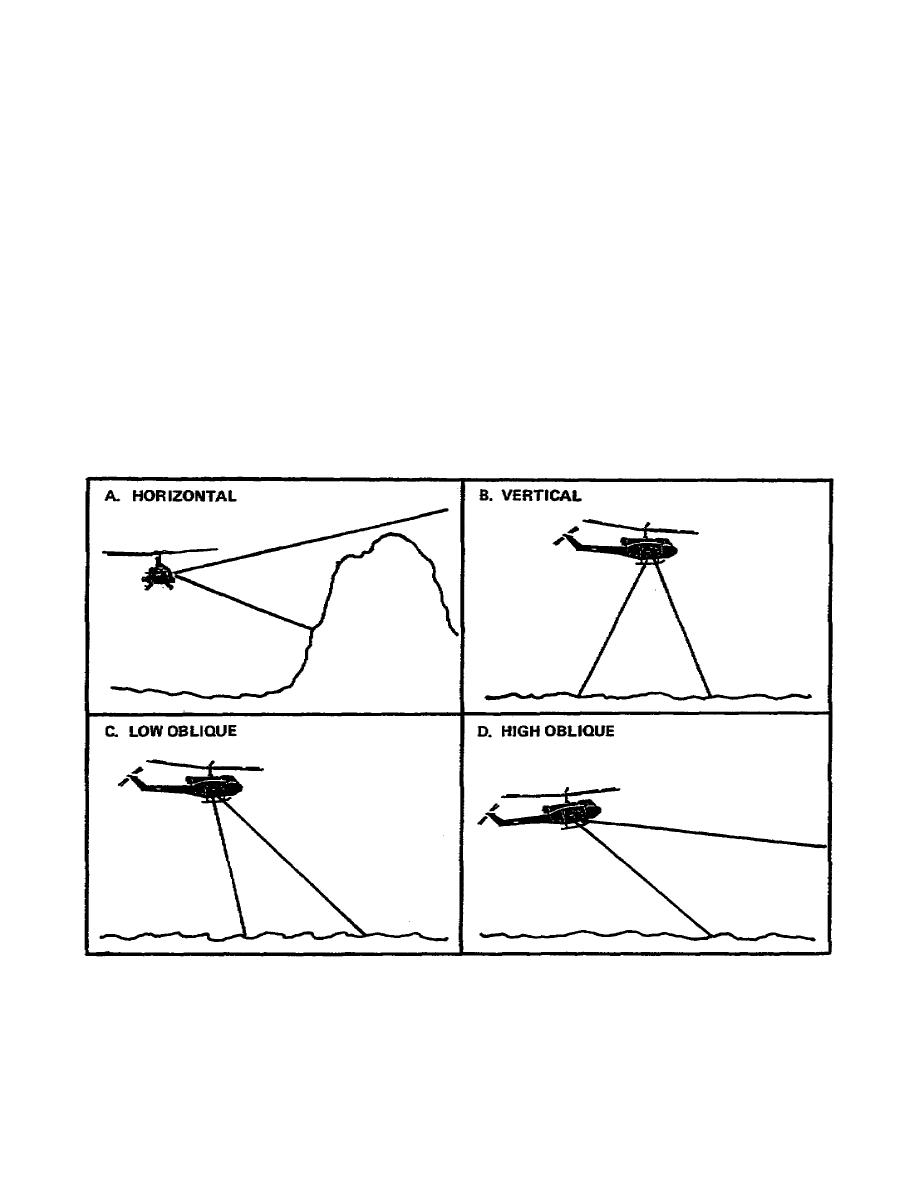
11.
Types of aerial shots.
a. Horizontals. A horizontal shot is taken of such things as the side of
a mountain, dam, bridge, or tall building.. It is best not to shoot at right
angles to the line of flight. The apparently greater rate of travel will cause
the subject to flash across the screen so rapidly that the audience will not
clearly see the object filmed. This is similar to shooting fast-moving objects
in ground photography (fig 1-6a). A shooting angle more in line with the line
of flight will minimize this effect.
Where possible, shoot at a 45-degree
angle from the line of flight.
Either forward or toward the rear of the
aircraft is suitable. This will minimize choppy or jumpy film.
b. Verticals. Vertical motion pictures are almost never taken. However,
if it is necessary to take a vertical photograph, the camera must be pointed
straight down (fig 1-6b).
c. Obliques.
There are two types of oblique photographs, low and high.
Low obliques do not show the horizon. They are usually about 50 degrees from
the vertical (fig 1-6c).
High obliques show the horizon and are about 60
degrees from the vertical (fig 1-6d). These numbers are approximate and should
not be considered binding. The best angle for motion pictures is a low oblique
with the camera tilted about 45 degrees from the vertical.
Figure 1-6.
Aerial angles
19


 Previous Page
Previous Page
